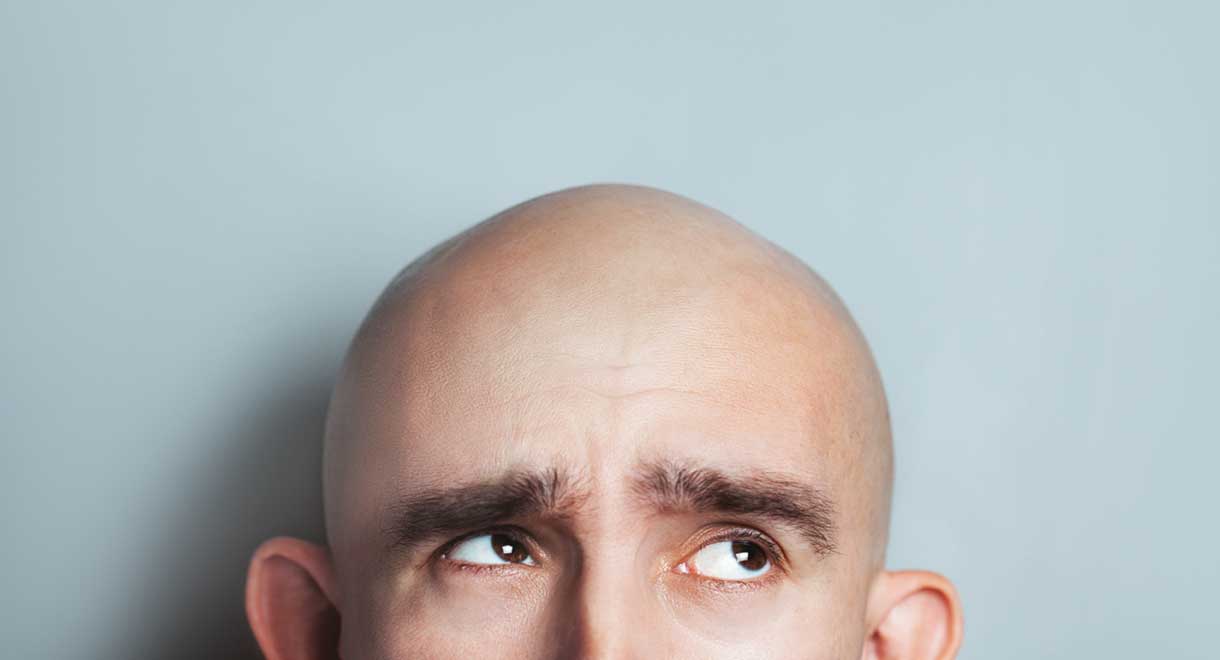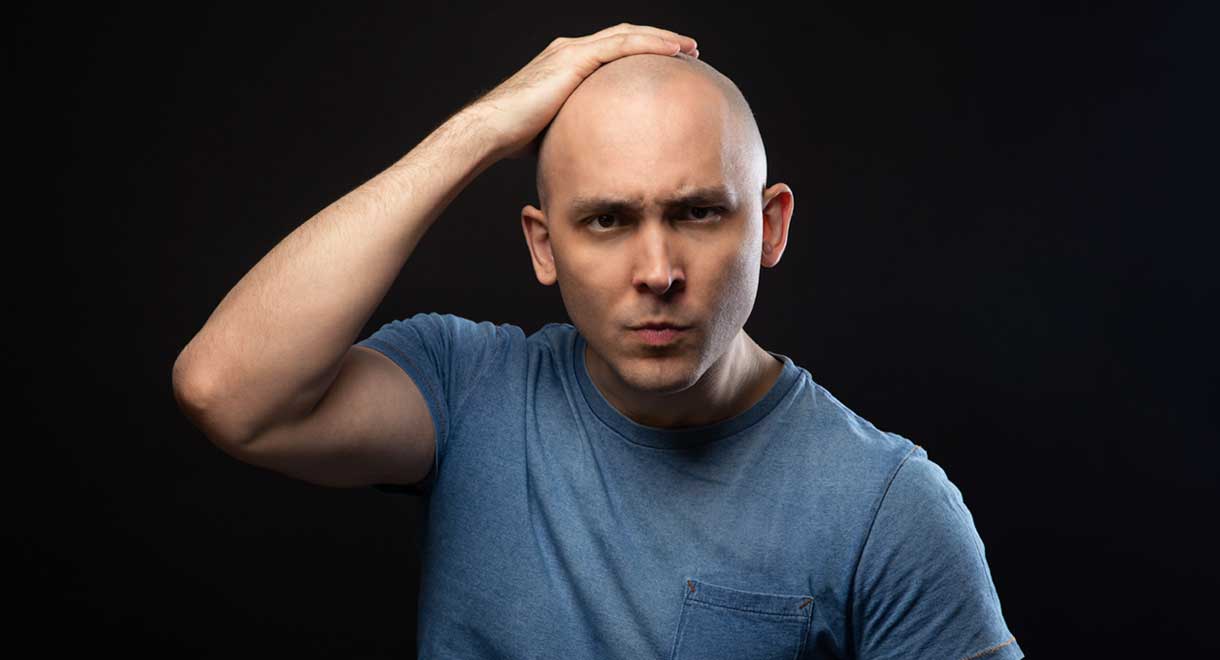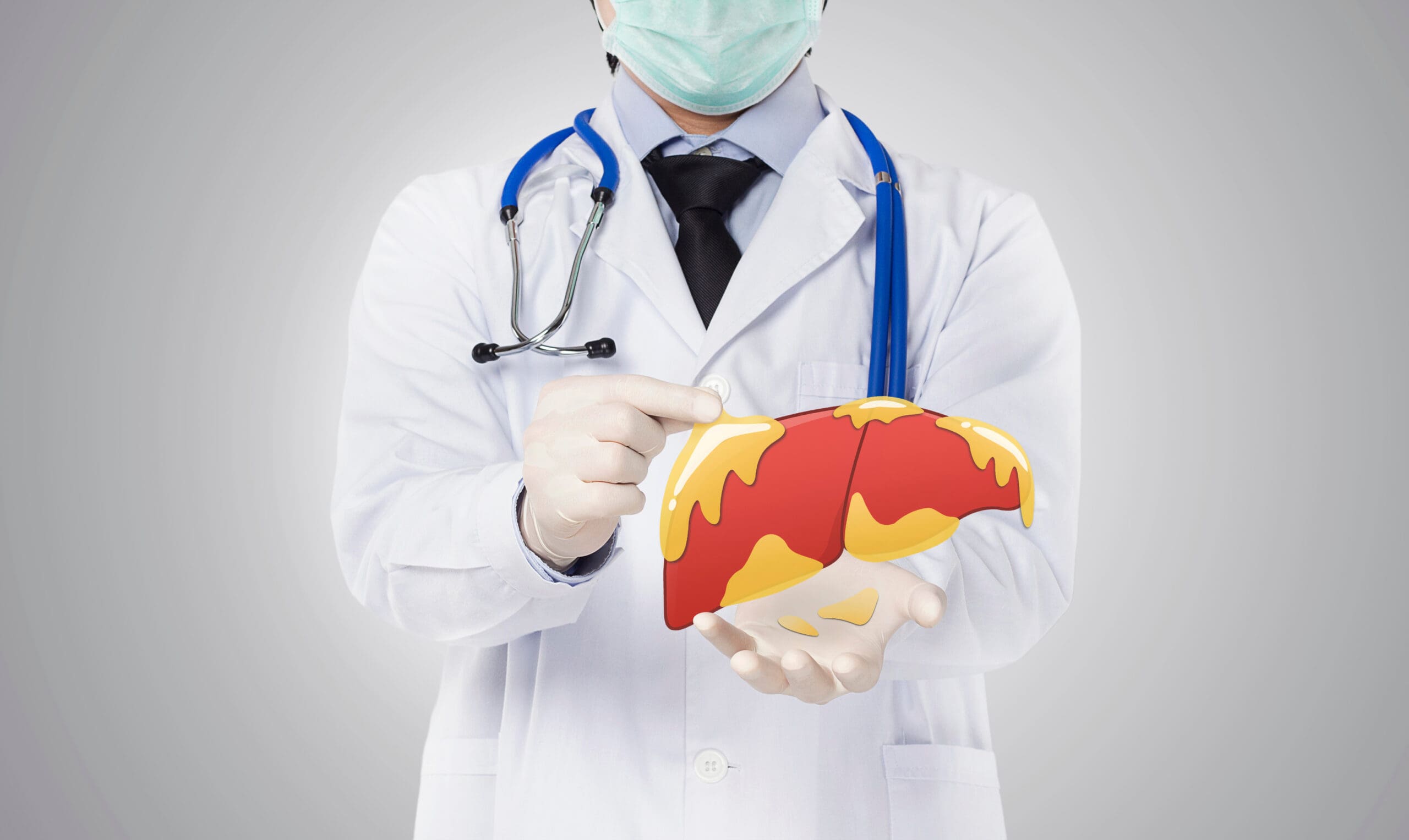Male baldness linked to prostate cancer
By naturopath Margaret Jasinska
Research has shown that men who lose scalp hair early in life are at greater risk of developing prostate cancer later in life. According to a French study published in the Annuals of Oncology, men in their 60s with prostate cancer were twice as likely to experience male pattern baldness (androgenic alopecia) beginning in their 20s than men without cancer. The men were more likely to develop prostate cancer, but it wasn’t necessarily a more aggressive type of tumour.
Prostate cancer is the most commonly diagnosed cancer in Australian men (after skin cancer) and it is the second most common cause of cancer death. According to the Prostate Cancer Foundation of Australia, approximately 20 thousand men will be diagnosed this year and each year approximately three thousand men die of the disease. Unfortunately, at this stage prostate cancer research receives very little government funding. This new finding may help to identify men at particularly high risk of developing prostate cancer. Hopefully this increased awareness can help men to take preventative steps.
What causes male pattern baldness?
A number of factors are involved. Genetics plays a big role. The genes that code for baldness are mainly on the X chromosome, therefore are predominantly passed on from the mother. Therefore if the men on your mother’s side of the family went bald, you are more likely to as well. However it is not always that simple and recently other genes that determine hair loss have been discovered.
Hormones play a big role in male pattern baldness, particularly testosterone and other male hormones. Male hormones are known as androgens, which is why the condition is known as androgenic alopecia (alopecia means hair loss). The main sex hormone in men is testosterone. However, an enzyme in the body converts testosterone into another form called dihydrotestosterone (DHT). This enzyme is called 5-alpha-reductase. It is found predominantly in the scalp and in the prostate gland. The expensive prescription drugs that inhibit the action of this enzyme are used to stop scalp hair loss in men.

Hormonal havoc
Dihydrotestosterone is a more potent form of testosterone and it has a powerful effect on the fair follicles of the scalp. It actually causes hair follicles to shrink, so they cannot produce hair properly. Men and women have a protein molecule that travels around in their bloodstream, binding to sex hormones. This molecule is called Sex Hormone Binding Globulin (SHBG) and it carries testosterone around in the bloodstream. SHBG actually prefers to bind to DHT than regular testosterone. It also reduces the ability of your body to convert testosterone to DHT. Research has shown that men who lose a lot of scalp hair early in life have lower levels of SHBG. Therefore they have more DHT floating around in their bloodstream, where it can cause the loss of scalp hair. High levels of DHT in the bloodstream also promote enlargement of the prostate gland.
What you eat determines your hormone levels
Sex Hormone Binding Globulin is predominantly made in the liver. Insulin and insulin-like growth factor 1 inhibit the production of SHBG. Therefore men with high insulin levels have low levels of SHBG and high levels of dihydrotestosterone. How do you end up with high insulin levels? Eat a lot of sugar, bread, pasta, rice, potatoes, breakfast cereals, flour, sugary drinks and alcohol. Being overweight, particularly in the abdominal area also leads to high blood insulin levels. Male pattern baldness is one symptom of syndrome X (also known as insulin resistance and metabolic syndrome). It is no wonder that men are losing hair earlier in life; high sugar/carbohydrate diets and obesity are going through the roof. Insulin and insulin-like growth factor 1 are both growth promoting hormones. They make things grow, and that includes tumours anywhere in the body. They also inhibit the death of cancerous cells in the body.
Diet tips for minimising hair loss
As mentioned, there is a genetic component to baldness. However diet and lifestyle still play a huge role. Here are some tips:
- Cut down on sugar, bread, pasta, rice, potatoes, breakfast cereals and any food that contains flour or sugar. This will lower insulin and thus lower dihydrotestosterone.
- Reduce alcohol consumption.
- Get some regular exercise. Exercise lowers insulin levels and it increases glucagon levels. Glucagon is a hormone that promotes fat loss in your body.
- Lose weight if you are overweight. Caucasian men should have a waist circumference no greater than 94 centimetres. In Asian men the waist should be no greater than 90 centimetres. Any more than that and excess fat will be accumulating around your internal organs and placing you at increased risk of heart attacks, cancer and strokes. A thick waist also leads to higher insulin levels and this promotes more of the potent dihydrotestosterone that causes scalp hair loss and enlargement of the prostate gland. For more information, see the books, “I can’t lose weight and I don’t know why”, “Fatty Liver – You can reverse it” and “Diabetes: Type 2: You can reverse it naturally”.
- Zinc reduces the activity of the enzyme 5 alpha reductase. This is the enzyme that produces DHT. Zinc is found in animal foods, seafood, nuts and seeds, particularly pepitas (pumpkin seeds).
- Ensure you’re eating enough protein. Protein is the most satiating nutrient. It helps to keep blood sugar and blood insulin levels in the healthy range. Meat, seafood, poultry, eggs and whey protein powder are all excellent protein sources.
Source: Ann Oncol February 15, 2011









Leave A Comment